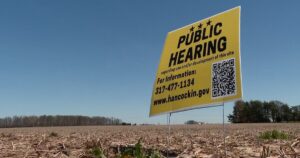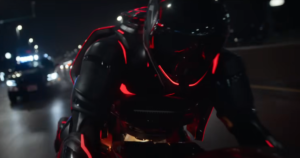Culver City Implements AI to Identify and Address Violations Impacting Bus Service

New Enforcement Measures in Culver City Bus Lanes
Overview of Changes
Culver City, California, is implementing stricter regulations regarding the use of bus lanes. The local government aims to enhance bus service efficiency and safety by utilizing advanced technologies, including cameras and artificial intelligence (AI). These measures will significantly affect how vehicles use the bus lanes, particularly for quick drop-offs and pick-ups.
Reasons for the New Rules
Mayor Dan O’Brien highlighted the safety concerns associated with double parking. "When cars double park, it creates inconveniences for other drivers and puts everyone’s safety at risk," he stated. The purpose of these changes is to keep the bus lanes clear for public transport, ultimately benefiting all road users.
Chief Transportation Officer, Diana Chang, shared insights on the broader impact of reliable bus services. "If buses run efficiently, they can sometimes reach destinations quicker than cars, especially during traffic," she explained. This could encourage more residents to consider using public transportation for their daily commutes.
Transition Period and Fines
In the coming 60 days, drivers found in violation of the new bus lane rules will receive warning tickets. However, starting after this grace period, the fine for violations will be set at $293. This substantial penalty is aimed at discouraging practices that disrupt public transit services.
Technology Involved
Culver City is using enforcement technology developed by Hayden AI, a company that first utilized its system in New York City. Since its introduction, NYC saw improvements with bus speeds increasing by 5%, while collisions decreased by over 30%. Charley Territo from Hayden AI explained, "The fewer times a bus has to move in and out of lanes, the less chance there is for collisions."
Role of the Police Department
Jennifer Atenza from the Culver City Police Department emphasized the system’s efficiency, describing it as a "force multiplier." The camera system will automatically gather data and send it to the parking enforcement unit for review. If the violation is deemed valid, citations will then be issued. This allows law enforcement to focus on more pressing issues without being physically present at all times.
How the AI System Works
The enforcement cameras will not directly issue moving violations; instead, human officers will review the footage to confirm whether a violation has occurred. The AI component of the system is designed to learn which scenarios lead to valid tickets. Territo explained, "Whenever an event is sent to the police department and it gets rejected, we learn from that and adjust the system accordingly."
Collaboration with Other Cities
Culver City joins Los Angeles and about seven other cities that have adopted automated camera enforcement systems. Each city faces unique challenges regarding their bus routes, but Territo believes that Hayden’s technology can improve public transportation across various urban environments. "This platform is not only scalable but also adaptable to different roadway configurations," he assured.
By implementing these measures, Culver City aims to create a more efficient and safer transit system while encouraging residents to rely more on public transport options. The integration of AI and camera enforcement technology is a step toward improving the overall commuting experience for all citizens.






